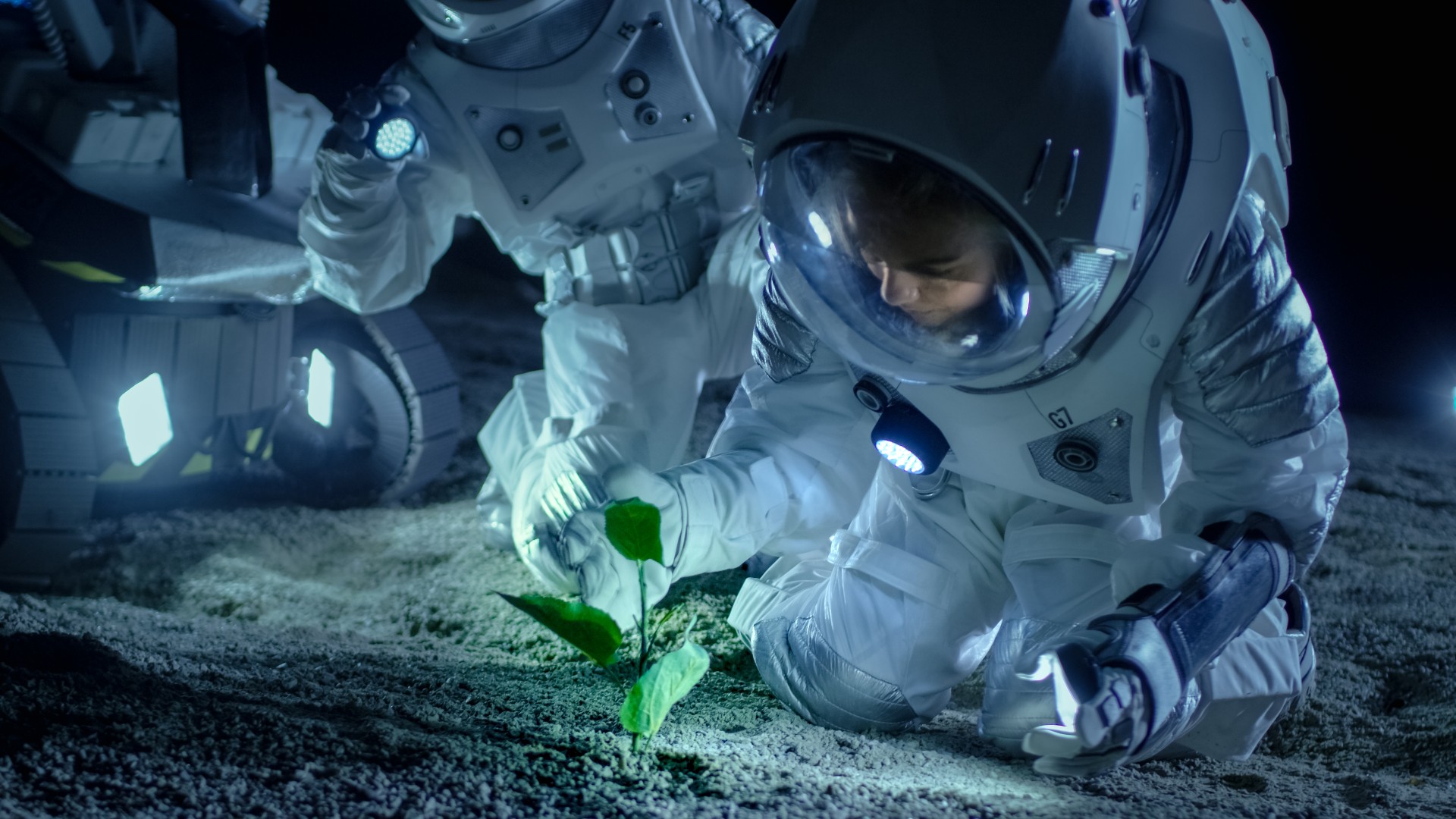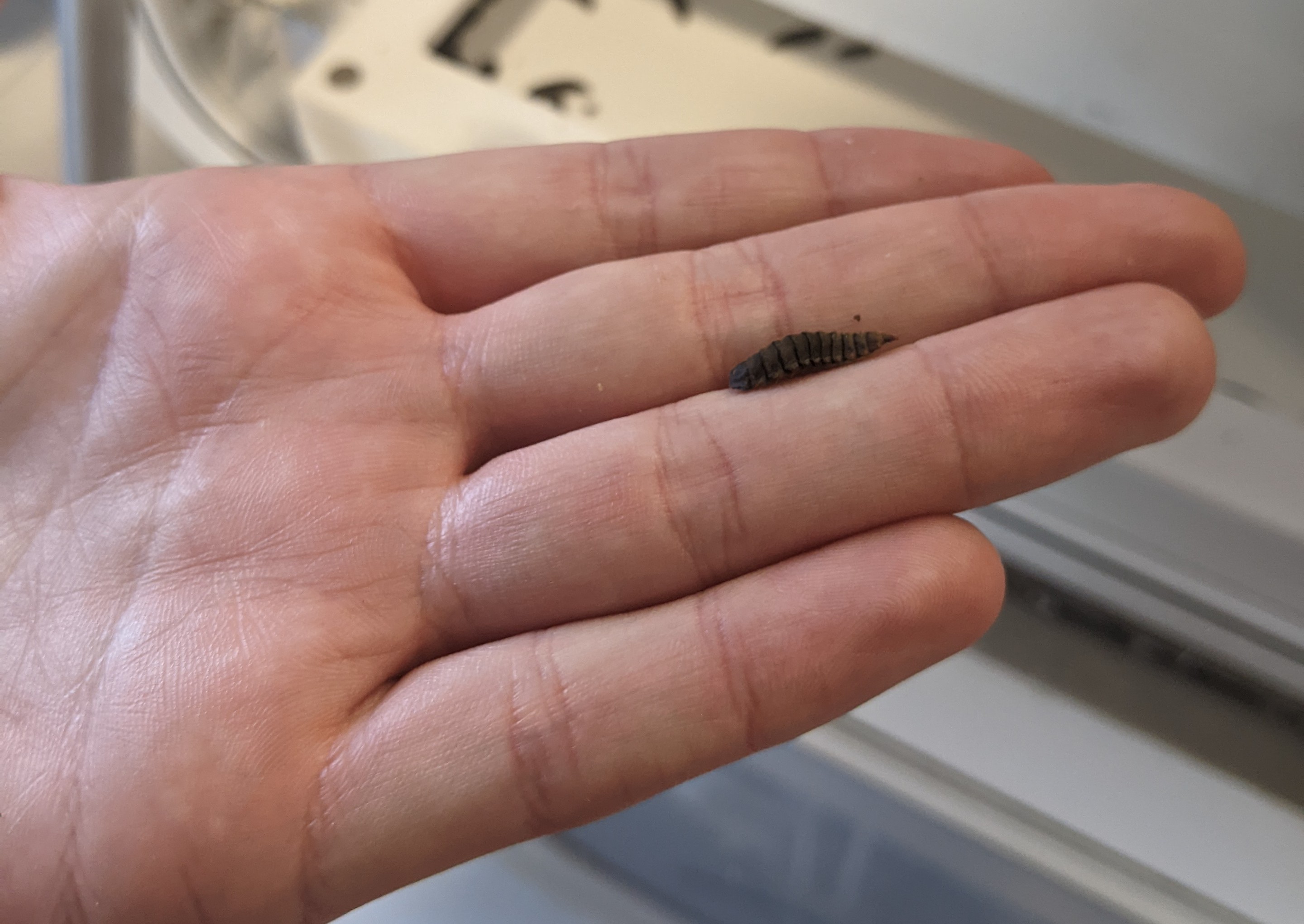NASA serves up $750,000 to Deep Space Food Challenge winners in cook-off for astronaut eats
From fungi to fly larva, here's what eight teams of scientists cooked up for the astronauts of the future.

BROOKLYN, N.Y. — What will the space food of the future look like? These scientists have answers.
On Friday (May 19), NASA announced the winners of phase two of the Deep Space Food Challenge, an initiative to design new food production technologies that could be used by astronauts on extended voyages. The methods could also help address food insecurity on Earth.
NASA announced eight winning teams at Friday's event, including five from the U.S. and three international teams, selected by both NASA and the Canadian Space Agency (CSA), who are collaborating on the challenge. In April, the CSA also announced the four winning teams of phase two the Canadian challenge, which is running at the same time as NASA's initiative. The five U.S winning teams received $150,000 in prize money each.
Of the eight winning teams announced on Friday, three were methods of manufacturing foods, while two were growth systems and three were combination or bioculture systems. The diversity of approaches was surprising even to the event's organizers. "I think what stood out to me the most was just the variety of solutions that came forward," Angela Herblet, the program manager for the challenge, told Space.com.
Related: Food in space: What do astronauts eat?
The winning growing systems used different techniques to conserve resources and minimize waste. Interstellar Lab, a winning team from Merritt Island, Florida, created the Nutritional Closed-Loop Eco-Unit System Nucleus, or NUCLEUS, a system of interconnected mini-habitats they call "quarks."

The top six quarks grow plants, while the bottom three are for growing mushrooms or raising insects. A habitat of black soldier flies, for instance, not only produces edible and calcium-rich fly larvae, but also carbon dioxide that the boxes of plants can use.
Breaking space news, the latest updates on rocket launches, skywatching events and more!

"You have waste and you make it into something useful," Maarten Smits, a plant scientist at Interstellar Lab, told Space.com. "When you go to space, that is very important." They added that in addition to being functional, the NUCLEUS displays its crops beautifully, potentially serving as a reminder of Earth and a morale-booster.
Air Company, a winning manufactured foods team from Brooklyn, also utilized waste to create their entry. Their product uses the carbon dioxide that astronauts exhale combined with hydrogen gas, which is also produced as a waste product in life support systems. They can then use these make alcohol, which they feed to yeast, also grown with minimal resources in space.

"The yeast ate that and grew more yeast," Stafford Sheehan, CEO of Air Company, told Space.com. "And so we made this kind of nutritional yeast that can be made from astronaut breath essentially, that is fully circular."
Several winning teams utilized types of fungi and mushrooms in their entries, which grow quickly and efficiently with few resources. Kernel Deltech, a team from Cape Canaveral, Florida, developed an autonomous appliance that produces a fungal base which grows well in low gravity and can be used to make many different types of foods.
"Only a few other organisms are so efficient," Miguel Neumann, CEO of Eternal, told Space.com. Eternal is a company that makes up part of Kernel Deltech, along with space engineering company De Leon Technologies. Neumann said that insects, for instance, also have this high efficiency, but not everyone may want to eat bugs.
The five U.S. teams will move onto phase three of the competition, where they will have a chance to win up to $1.5 million in prizes from NASA. The three international teams are also invited to advance to the next stage of the competition. While phase one of the competition was focused on design and phase two looked at whether the teams could actually make food, Herblet said that in phase three, teams will have to prove that their technologies can repeatedly and reliably produce that food.
The five winning teams in phase two from the U.S. are:
- Air Company of Brooklyn, New York
- Interstellar Lab of Merritt Island, Florida
- Kernel Deltech USA of Cape Canaveral, Florida
- Nolux of Riverside, California
- SATED (Safe Appliance, Tidy, Efficient, and Delicious) of Boulder, Colorado
The three international winning teams are:
- Enigma of the Cosmos of Melbourne, Australia
- Mycorena of Gothenburg, Sweden
- Solar Foods of Lappeenranta, Finland
Even though the challenge is focused on producing food for astronauts, Herblet emphasized that the technologies should also have applications on Earth, for instance in disaster relief. Globally, as many as 828 million people are not sure where their next meal will come from, according to the United Nations World Food Programme.
"We do want to look to the future, what the future food system looks like," said Herblet. "But we also want to make sure that we're caring for our planet and that there's applications for Earth."
Join our Space Forums to keep talking space on the latest missions, night sky and more! And if you have a news tip, correction or comment, let us know at: community@space.com.

Rebecca Sohn is a freelance science writer. She writes about a variety of science, health and environmental topics, and is particularly interested in how science impacts people's lives. She has been an intern at CalMatters and STAT, as well as a science fellow at Mashable. Rebecca, a native of the Boston area, studied English literature and minored in music at Skidmore College in Upstate New York and later studied science journalism at New York University.

